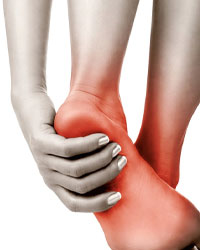Shoulder Pain in Edmonton
Shoulder pain can interfere with daily activities, limiting movement and causing discomfort during tasks such as lifting, reaching, or even sleeping. Whether the pain is caused by an injury, overuse, or an underlying condition, addressing it early can help improve function and mobility. Our clinic in Edmonton provides physiotherapy for shoulder pain, helping individuals manage symptoms and regain movement.
Causes of Shoulder Pain
Shoulder pain can result from various conditions affecting the muscles, joints, ligaments, and tendons. Some common causes include:
Rotator Cuff Injuries
The rotator cuff consists of muscles and tendons that stabilize the shoulder. Overuse, sudden injuries, or age-related degeneration can lead to tears, inflammation, or weakness in the rotator cuff, causing pain and limited range of motion.
Shoulder Impingement
Shoulder impingement occurs when the tendons in the rotator cuff become compressed between the bones of the shoulder joint. This can cause pain, especially when raising the arm overhead or reaching behind the back.
Frozen Shoulder (Adhesive Capsulitis)
Frozen shoulder develops when the connective tissue around the joint thickens and tightens, restricting movement. This condition progresses in stages, starting with pain and leading to significant stiffness that can last for months.
Arthritis
Osteoarthritis and rheumatoid arthritis can affect the shoulder joint, leading to inflammation, stiffness, and discomfort. Arthritis-related shoulder pain often worsens with movement and may limit daily activities.
Tendinitis and Bursitis
Repetitive shoulder movements can lead to tendinitis, an inflammation of the tendons, or bursitis, an inflammation of the fluid-filled sacs that cushion the joint. These conditions cause pain, swelling, and difficulty moving the arm.
Shoulder Instability and Dislocation
Shoulder instability occurs when the joint becomes loose, increasing the risk of partial or complete dislocation. This may result from previous injuries, repetitive strain, or structural abnormalities in the joint.
Symptoms of Shoulder Pain
The severity and nature of shoulder pain depend on the underlying condition. Common symptoms include:
- Dull or sharp pain in the shoulder joint or upper arm
- Weakness or reduced range of motion
- Stiffness that worsens over time
- Pain when lifting, reaching, or carrying objects
- Swelling or tenderness around the shoulder
- Clicking or popping sounds during movement
How Physiotherapy Helps with Shoulder Pain
Physiotherapy plays an important role in managing shoulder pain by improving mobility, strengthening muscles, and reducing discomfort. A physiotherapist will assess the condition and develop a plan that may include exercises, manual therapy, and movement modifications.
Strengthening and Mobility Exercises
Targeted exercises help strengthen the shoulder muscles, improve flexibility, and restore range of motion. Strengthening the surrounding muscles can also provide better joint support and prevent future injuries.
Manual Therapy
Hands-on techniques, such as joint mobilization and soft tissue release, can reduce muscle tension and improve shoulder mobility. These techniques may help decrease stiffness and improve overall movement patterns.
Postural Correction
Poor posture can contribute to shoulder pain by placing unnecessary strain on the muscles and joints. A physiotherapist may recommend posture-focused exercises to reduce stress on the shoulders and improve alignment.
Pain Management Strategies
Physiotherapists use various methods, such as heat or cold therapy, to manage pain and inflammation. Activity modifications may also be recommended to prevent further irritation to the shoulder joint.
When to Seek Physiotherapy for Shoulder Pain
If shoulder pain persists for more than a few days or worsens with movement, physiotherapy may help. Seeking care early can prevent further complications and improve recovery. Individuals recovering from injuries, surgeries, or chronic conditions can also benefit from physiotherapy.
Support for Shoulder Pain in Edmonton
Our clinic in Edmonton offers physiotherapy for shoulder pain, helping individuals regain strength, mobility, and function. Whether the pain is due to an injury, overuse, or an underlying condition, we are here to help.
If you are experiencing shoulder pain, contact us today to schedule an appointment.
















